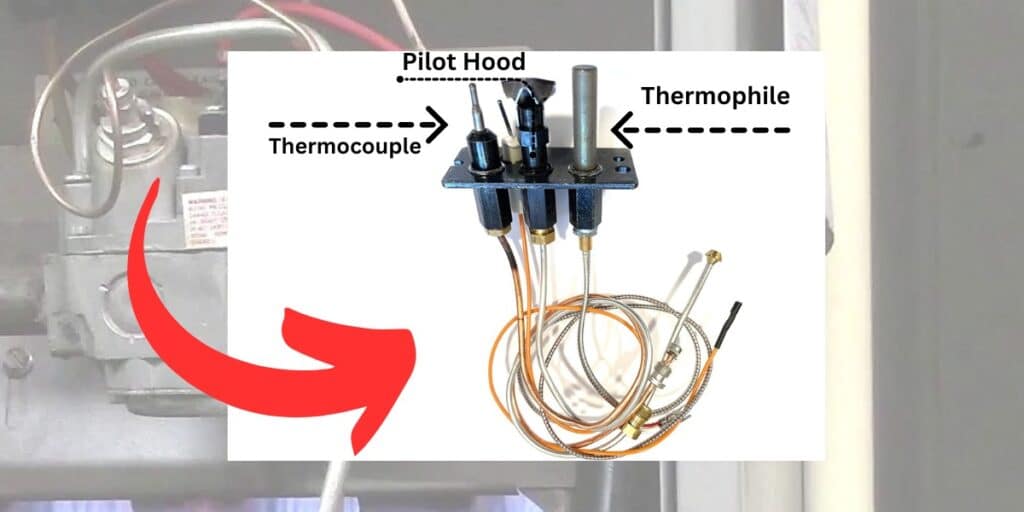Lighting the pilot light on your Bryant furnace is a task that, while seemingly straightforward, requires attention to safety and detail to ensure the process goes smoothly and safely. Whether you’re facing the chill of winter or simply maintaining your furnace for the season, understanding how to safely light your pilot light is essential.
This guide aims to demystify the process, providing clear, step-by-step instructions while emphasizing safety precautions to avoid common pitfalls.
Before diving into the lighting process, it’s crucial to understand what a pilot light is and its role in your Bryant furnace.
What Is a Pilot Light?
A pilot light is a small, continuously burning flame found in gas appliances, including furnaces, water heaters, and stoves.

Its primary function is to ignite the main burner when the appliance is turned on, ensuring a quick and efficient start. The pilot light is a crucial component in the safe operation of gas-powered systems, indicating that your appliance is ready to function immediately.
Unlike electronic ignition systems found in newer models, a pilot light is unique in that it burns constantly, even when the main burner is off. This design ensures that gas released into the appliance is immediately ignited, preventing gas build-up and potential hazards.
However, it also means that the pilot light must be monitored and maintained to keep it from extinguishing, which would prevent the appliance from operating.
Maintaining a pilot light involves keeping it clean and free from debris and ensuring a steady supply of gas for it to burn. If a pilot light goes out, it usually can be re-light manually. However, recurrent issues with a pilot light not staying lit might indicate a need for professional servicing to address underlying problems.
Step-by-Step Guide to Lighting Your Pilot Light
Locate the Instructions: Your Bryant furnace should have a label or sticker with specific instructions for lighting the pilot. These instructions can vary slightly from one model to another, so following them as closely as possible is essential.
Safety should be your paramount concern when handling any gas appliance. While rare, gas leaks can pose serious risks. Before attempting to light your pilot light, ensure the area is well-ventilated.
If you smell gas, stop immediately. Do not attempt to light the pilot light, turn on any electrical appliances, or ignite anything that could cause a spark. Leave the area and contact your gas utility provider or a professional technician to address the issue.
- Turn Off the Gas: Before lighting the pilot, turn the valve to the “Off” position and wait a few minutes. This pause allows any residual gas to dissipate, reducing the risk of accidental ignition.
- Access the Pilot Light: Remove the furnace cover to access the pilot light assembly. It is typically found near the bottom of the furnace, and you may need a flashlight to locate it.
- Turn the Gas Valve to “Pilot”: Once you’ve located the pilot light, turn the gas valve to the “Pilot” position. This setting allows gas to flow to the pilot light without activating the furnace.
- Ignite the Pilot Light: Hold down the reset button or dial (as indicated in your furnace’s instructions), and use a long match or a barbecue lighter to light the pilot. Keep the reset button depressed for about a minute after the pilot light ignites to ensure it stays lit.
- Check the Flame: The pilot light should burn with a small, steady flame. If the flame appears too large or too small, it may indicate a need for adjustment or maintenance by a professional.
- Reassemble and Test: Once the pilot light is lit and burning steadily, replace the furnace cover and turn the gas valve to the “On” position. Set your thermostat to your desired temperature and observe the furnace to ensure it starts properly.
Troubleshooting Tips for a Bryant Furnace Pilot Light That Keeps Going Out
When the pilot light on your Bryant furnace refuses to stay lit, it can signal several underlying problems, disrupting your home’s warmth and comfort. Fortunately, with a few troubleshooting steps, you may be able to pinpoint and resolve the issue.
Below are some troubleshooting suggestions to help you address this issue:
- Examine the Thermocouple: A critical safety feature is turning off the gas when it doesn’t sense a lit pilot light. A defective or incorrectly positioned thermocouple might mistakenly stop the gas, causing the pilot to go out. Evaluating and possibly adjusting or replacing the thermocouple could solve the issue.
- Pilot Light Cleaning: Dirt and debris can block the pilot light, extinguishing it. Cleaning the pilot light area with a delicate brush might clear up blockages, enabling a steady flame.
- Ensure Adequate Gas Supply: Your gas supply must be consistent for the pilot light to stay lit. Check that the gas valve is open and that no broader supply issues affect your furnace.
- Flame Adjustment: The pilot flame should be blue and directly contact the thermocouple. If the flame is too weak, yellow, or doesn’t reach the thermocouple, it may require adjustment to ensure it properly heats.
- Replacement of Components: Persistent problems with the pilot light not staying lit may necessitate replacing parts like the thermocouple or the gas valve.
For part replacements and more complex issues, it is advised to seek the assistance of a professional to ensure safety and efficiency in handling your Bryant furnace.
Navigating a pilot light issue requires cautious handling. If you’re ever uncertain or the problem continues, seeking professional assistance ensures your furnace is safely and effectively managed.
Tips for Maintaining Your Pilot Light
- Regular Cleaning: Keep the area around your furnace clean and debris-free. A clean furnace is less likely to have pilot light issues.
- Annual Inspections: Have a professional inspect your furnace annually. They can clean the pilot light assembly and perform necessary adjustments to ensure optimal performance.
- Know When to Call a Professional: If you encounter issues lighting the pilot light or if the furnace doesn’t operate correctly after the pilot light is lit, it’s time to call a professional. Attempting to fix complex problems on your own can be dangerous.
Lighting the pilot light on your Bryant furnace is a task that homeowners can typically perform on their own with careful attention to safety and detail. Following the steps outlined in this guide ensures your home remains warm and comfortable throughout the colder months.
Remember, regular maintenance and professional inspections are key to the longevity and efficiency of your furnace.
If you feel unsure about the process or encounter issues, do not hesitate to contact a certified HVAC technician for assistance. Your safety and the proper operation of your furnace are paramount.






